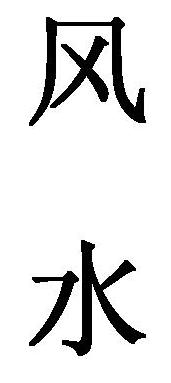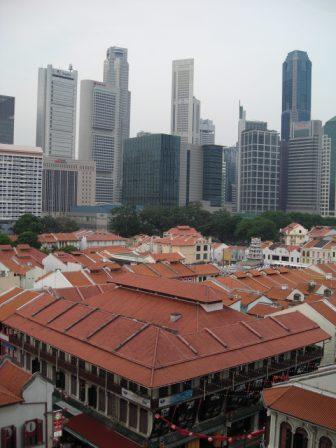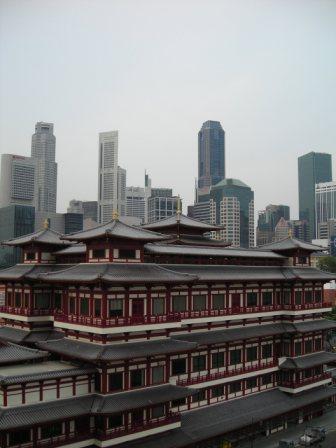
| Home | Chinatowns of the world | Festivals | Culture | Food Culture | History | Countries |
| Chinese Religion | Tours | Sitemap | Documentaries | About | Contact |
Fengshui 风水To begin let’s look at how Feng Shui, 风水, started. Its origins can be traced all the way back to pre-historical period of Chinese history when the ancient practice of Feng Shui was known as Xiang Di 相地 which meant the observation and analysis of the earth, similar to our modern study of geography. This practice was used to select the right site for a settlement. Usually it would be close to a water source such as near a river or underground water. The study of topographical features and soil quality is also taken into consideration to ensure fertile lands are available for farming. The main focus of the practice then was on ensuring the basic survival of the people. It is from this time that some of the basic principles of Feng Shui were developed. During the Zhou Dynasty (11th century BC to 246 BC), the pre-classical period of Chinese history, there is evidence from oracle bones and other artifacts that solar and lunar eclipses had been recorded. Constellations were recorded in the Book of Odes 诗经 (9th century BC) and a system of divination called "Zhan Bu'占卜was used to determine the auspiciousness of a site. 'Zhan Bu' deals with the nature of water on a site and underground streams. It is also at this time that the study of the I Ching 易经, He Tu and Luo Shu 河图洛书 was popular. Chinese theories on the nature of the Universe such as those expounded by the Taoists also play a part in shaping the Feng Shui theories. Hence yin/yang阴阳, trigrams of the Ba Gua 八卦 and the five elements 五行 came to have a place in Feng Shui practice. During the Qin Dynasty (221 – 207 BC), the concept Dimai 地脉 (the veins of the earth), was mooted. It was believed that the earth’s energy, similar to blood circulating in the body, is distributed across the land via earth veins. Those who harness the energy from these veins will prosper. This is also possibly when the practice of auspicious burial sites for ancestors started. During the Western Han Dynasty (206 B.C. - 24 A.D.) the combined study of geography and astrology, the study of heaven, earth and their relationship to man developed. This is well known as Kanyu 堪舆. More detailed study of the mountain ranges of China was also carried out and this marked the beginning of the term 'Dragon Veins'. The Eastern Han Dynasty (25 -220 A.D.) was a time when the study of Feng Shui assumed several forms. During the time of the Wei-Jin period a grand master of Feng Shui known as Guo Pu 郭璞 (276-324A.D.) documented methods of applying Feng Shui to burial sites in a book entitled Zhang Shu 葬书. It is in this book that the concept and methodology of Feng (Wind) and Shui (Water) were clearly explained and presented. Sui, Tang and the Five Dynasties (581 - 960 A.D.) were three periods when FengShui became more scientific and gradually its activities became increasingly differentiated, giving rise to different schools of thought. Using the principles of Feng Shui at a gravesite became common practice and even spread to the peripheries of the empire. During the five dynasties period (907 - 960 A.D.) feng shui practice became differentiated into 'Yinzhai' 阴宅 (residence of the dead) and 'Yangzhai' 阳宅 (residence of the living). During the Song Dynasty, (960 -1279 A.D.), Feng Shui influenced the making of decisions such as building sites, burial sites, and irrigation which in turn has a bearing on the fortune of a family. The importance of feng shui thus began to focus on the external surrounding of a dwelling such as the direction and landform than on the internal environment. This is the time where many taboos regarding the construction of buildings emerged including the popular practice of choosing an auspicious date to lay the foundations of a new building. This is when a certain amount of superstition began to associate with Feng Shui. During the Ming Dynasty, (1368 - 1644 A.D.) and the more recent Qing Dynasty, (1644 - 1911 A.D.), Feng Shui remained popular. Practitioners during the Ming Dynasty were then called Yin-Yang experts. Numerous scholars worked on subjects related to Feng Shui. Construction plans closely adhered to Feng Shui principles. Many techniques of Feng Shui were further developed, including popular methods we have today, among them the "Fei Xing' or "Flying Star Method' 飞星, 'Ba Zhai' or 8 house method 八宅, 'San He' or the 'Triple Combination School' 三合, 'Ming Kwa' 名挂or destiny number school and that based on the Chinese horoscope known as the '4 pillars of Destiny' 四柱and the 'Tzu Wei' or Purple Palace Astrology 紫薇. Today, Feng Shui is going through yet another phase of transformation. The art and science of Feng Shui is now gaining acceptance and practiced even by non-Chinese. This diversification has resulted in many new ideas and concepts being introduced. Furthermore, with the current urban landscape of high buildings and roads for fast moving vehicles, certain aspects of Feng Shui concepts have taken a different form. In the modern practice of Flying Star Feng Shui, roads can be regarded as rivers and a tall building as a mountain. Feng Shi audits usually happen only after a building is completed. By then changes to the physical structure are limited, rendering some ancient methods ineffective. Because of Feng Shui diversification and modernization, a new form of Feng Shui is taking shape. I call it symbolic Feng Shui. A Feng Shui practitioner would usually use certain traditional methods to calculate the energy of different sectors of the site which may later involves placing auspicious Feng Shui items around them. These items placed in certain sectors are meant to evoke positive energy or counter certain sectors which are negative. This actually is a combination of applying positive mental affirmation with traditional Feng Shui methods. The ancient methods provide the fundamentals but the changes actually emanate from the mind placated by the items placed. Besides invoking positive mental energy, many practitioners also focus on energizing items such as natural crystals and on blessed items from certain religious rituals. It is believed that the energized item not only works symbolically as affirmations for the mind, but actually changes the energy field of the space around it. This in turn enhances and strengthens the “cure”, thereby generating even more positive results. Feng Shui has evolved from being used for basic survival in the past to seeking prosperity and abundance in our modern world. Although the concepts and methods have changed, a few fundamentals remain intact; Feng Shui is the study of our environment, the energy within the environment and its relationship with man. The energy around us is constantly in vibration and always moves in cycles. Feng Shui applications, past or present is simply a matter of putting these knowledge to use and to ensure that man is in harmony with the flow of nature and co-exists with his environment. When these are in harmony, the mind becomes healthy and this in turn yields positive results such as good health and abundant good things in life. Article contributed by Mr. Andrew Tee
|
|
| Join us on | Youtube | |||
| Copyright © 2007-24 Chinatownology, All Rights Reserved. | ||||






